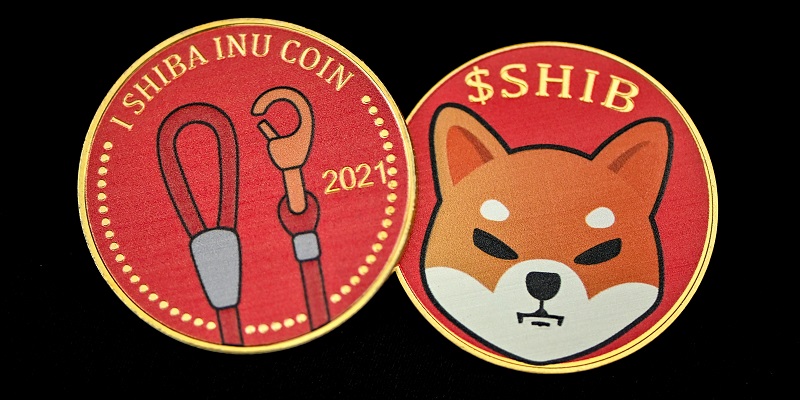The world of cryptocurrency and blockchain technology keeps evolving, with innovative solutions emerging to address scalability and efficiency issues. One such groundbreaking development is the Shibarium blockchain, created as part of the Shiba Inu project. Shibarium introduces a Layer-2 blockchain network, providing enhanced functionality and utility to the Shiba Inu ecosystem.
The concept of Shibarium and its origin
In 2021, the anonymous creator of Shiba Inu, Ryoshi, proposed the concept of the Shibarium blockchain. Drawing inspiration from the success of the Shiba Inu token, the idea behind Shibarium aimed to overcome the limitations faced by many decentralized projects. By introducing a Layer-2 framework, Shibarium sought to leverage the security and decentralization of the Ethereum mainnet while offloading transaction processing to a separate layer.
Shibarium is a Layer-2 blockchain solution
Shibarium operates as a Layer-2 blockchain, distinguishing itself from conventional blockchains like Bitcoin and Ethereum. This strategic architectural choice empowers Shibarium to enhance its scalability and efficiency while benefiting from the security and robustness of the Ethereum mainnet. By building on top of Ethereum, Shibarium inherits the network’s stability and decentralized nature, ensuring the integrity of its transactions and smart contracts.
Benefits of operating as a Layer-2 solution
By functioning as a Layer-2 solution, Shibarium offers several significant advantages. Firstly, it reduces transaction costs and congestion on the Ethereum mainnet. Through a process called transaction bundling, multiple transactions are combined, minimizing gas fees, and efficiently utilizing network resources. This approach makes it cost-effective and seamless for users to interact with the Shiba Inu ecosystem.
Transaction bundling is a core mechanism in Shibarium
One of the core mechanisms employed by Shibarium is transaction bundling. This innovative technique involves grouping multiple transactions together and executing them as a single transaction on the Ethereum mainnet. By bundling transactions, Shibarium minimizes gas fees, making transactions more affordable for users. Additionally, transaction bundling reduces the load on the Ethereum network, enhancing the overall scalability of the Shiba Inu ecosystem.
The role of validators in maintaining transaction integrity and security is crucial
To ensure the integrity and security of transactions, Shibarium relies on a network of validators. Validators verify and validate transactions before adding them to the blockchain. These validators play a crucial role in maintaining the trust and reliability of the Shibarium network. Through a consensus mechanism, validators prevent fraud, censorship, and double-spending, further solidifying the security of the Shiba Inu ecosystem.
Implications of Shibarium for the Shiba Inu project
The introduction of the Shibarium blockchain has profound implications for the Shiba Inu project. It not only addresses scalability issues but also introduces new functionalities. One notable feature is a burn mechanism for SHIB tokens, reducing the circulating supply and potentially increasing their value. Furthermore, with Shibarium, the Shiba Inu ecosystem gains support for diverse digital assets, unlocking new avenues for growth and utility.
Introduction of BONE as the native currency
Shibarium has its native currency called BONE. BONE serves as the primary token within the Shibarium blockchain ecosystem, facilitating transactions and supporting various functionalities. As the backbone of the network, BONE aims to incentivize participation, promote governance, and foster economic sustainability within the Shiba Inu ecosystem.
Developer resources and decentralized applications in Shibarium
To encourage innovation and growth, Shibarium provides extensive resources for developers to build decentralized applications (DApps) tailored to the Shiba Inu ecosystem. These resources include comprehensive documentation, developer tools, and SDKs. By empowering developers, Shibarium aims to foster a vibrant ecosystem of DApps, enabling unique and exciting use cases for Shiba Inu enthusiasts around the world.
Overview of tokens in the Shibarium ecosystem
The Shibarium blockchain ecosystem boasts several tokens, each contributing to the overall functionality and utility of the system. These tokens include SHIB, the original token that initiated the Shiba Inu project, as well as BONE, the native currency of Shibarium. Additional tokens like LEASH, TREAT, and SHI introduce unique features, incentives, and utility, allowing users to engage in various aspects of the ecosystem.
The importance of staying updated on Shibarium’s developments
As Shiba Inu continues to evolve and unveil new features and updates, it becomes crucial for both crypto enthusiasts and investors to stay informed. By staying abreast of Shiba Inu’s developments, individuals can assess the potential impact on the Shiba Inu ecosystem, evaluate investment opportunities, and understand the direction in which the project is headed.
Shibarium blockchain revolutionizes the Shiba Inu ecosystem by introducing a Layer-2 solution that leverages the security of the Ethereum mainnet. Through transaction bundling, Shibarium minimizes costs and optimizes network resources, enhancing scalability and usability. With validators ensuring transaction integrity, the ecosystem gains trust and reliability. The introduction of BONE as the native currency and support for diverse digital assets further expands the ecosystem’s utility. As Shibarium continues to progress, staying informed about its developments is essential for anyone interested in the Shiba Inu project.

